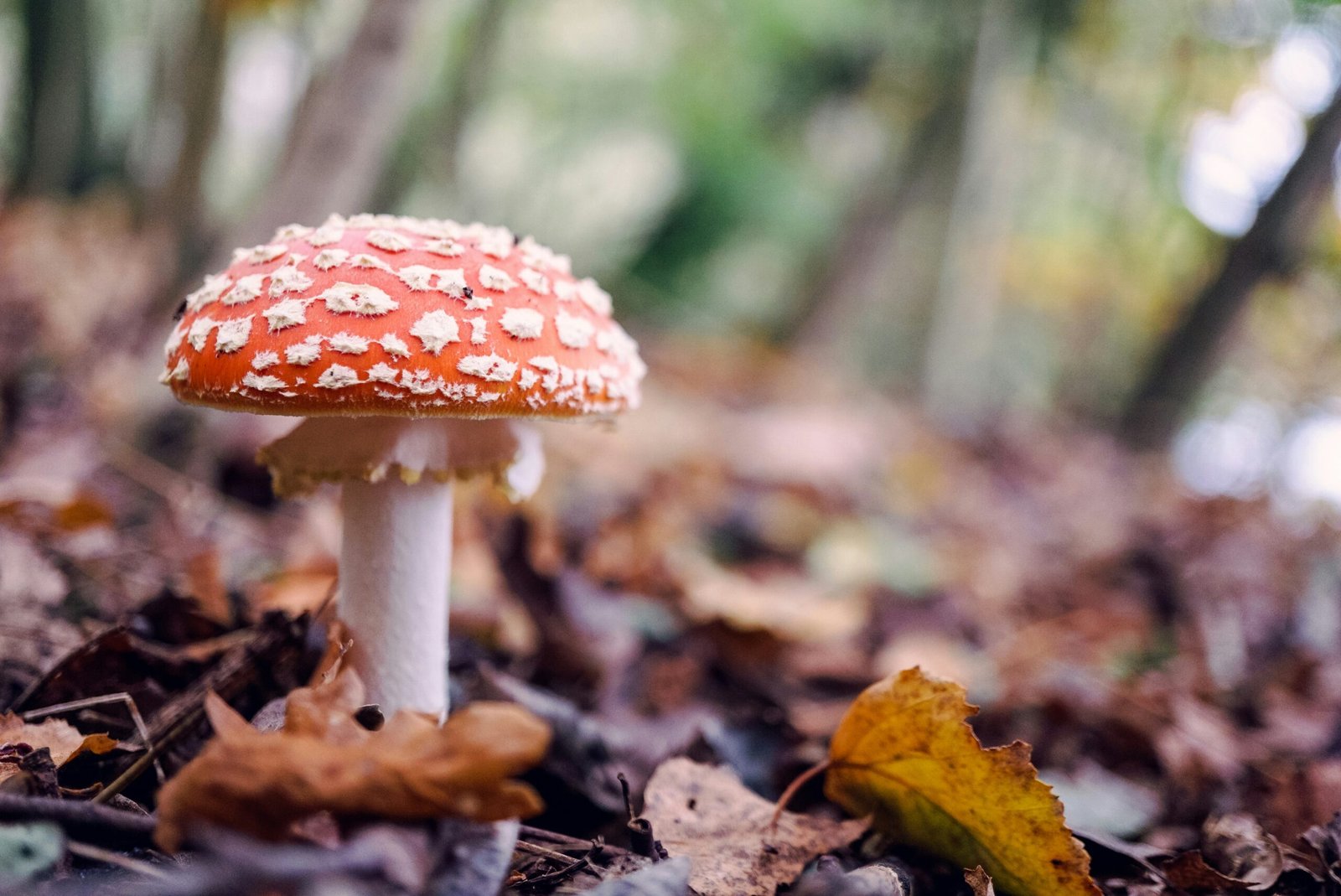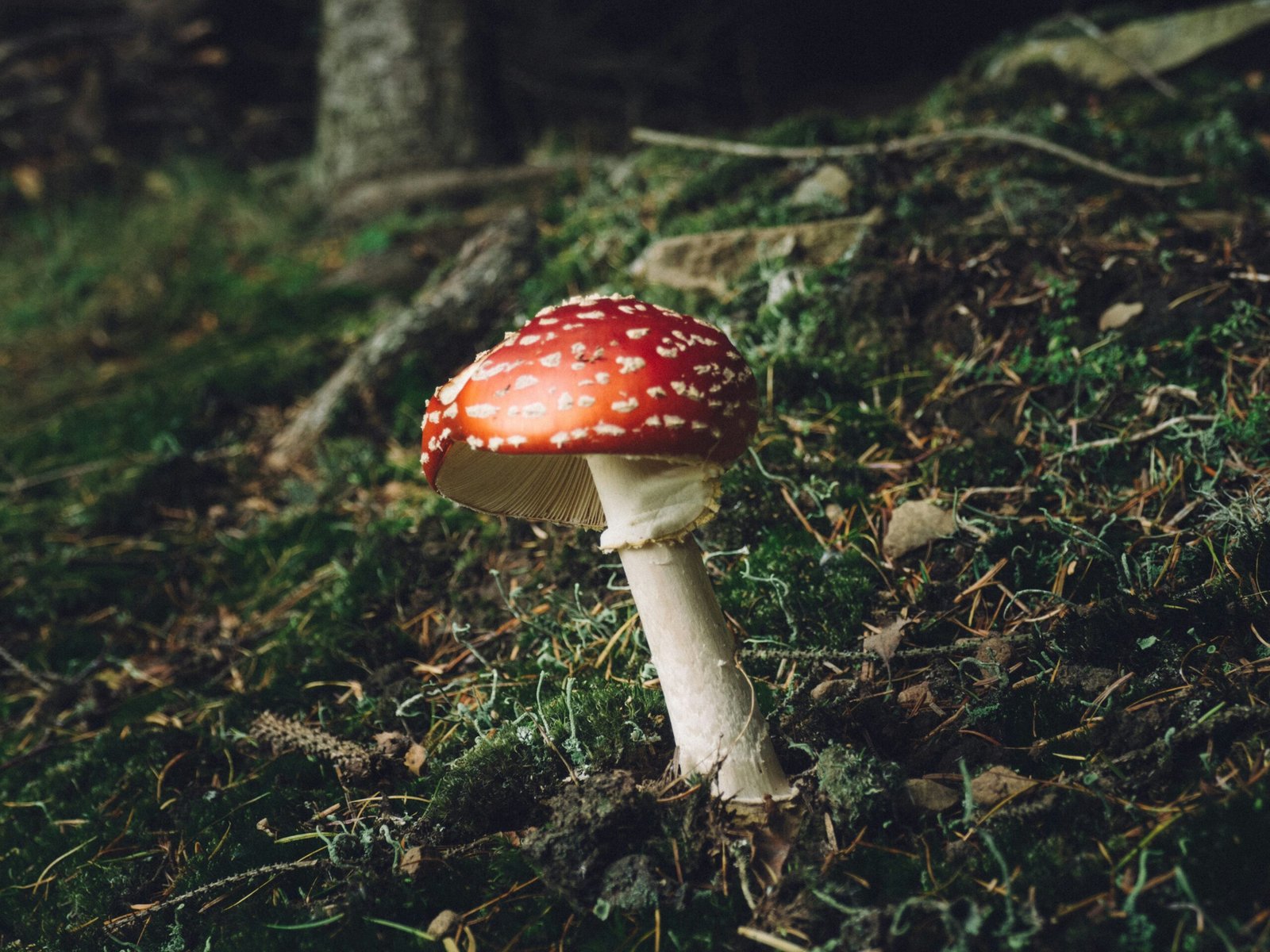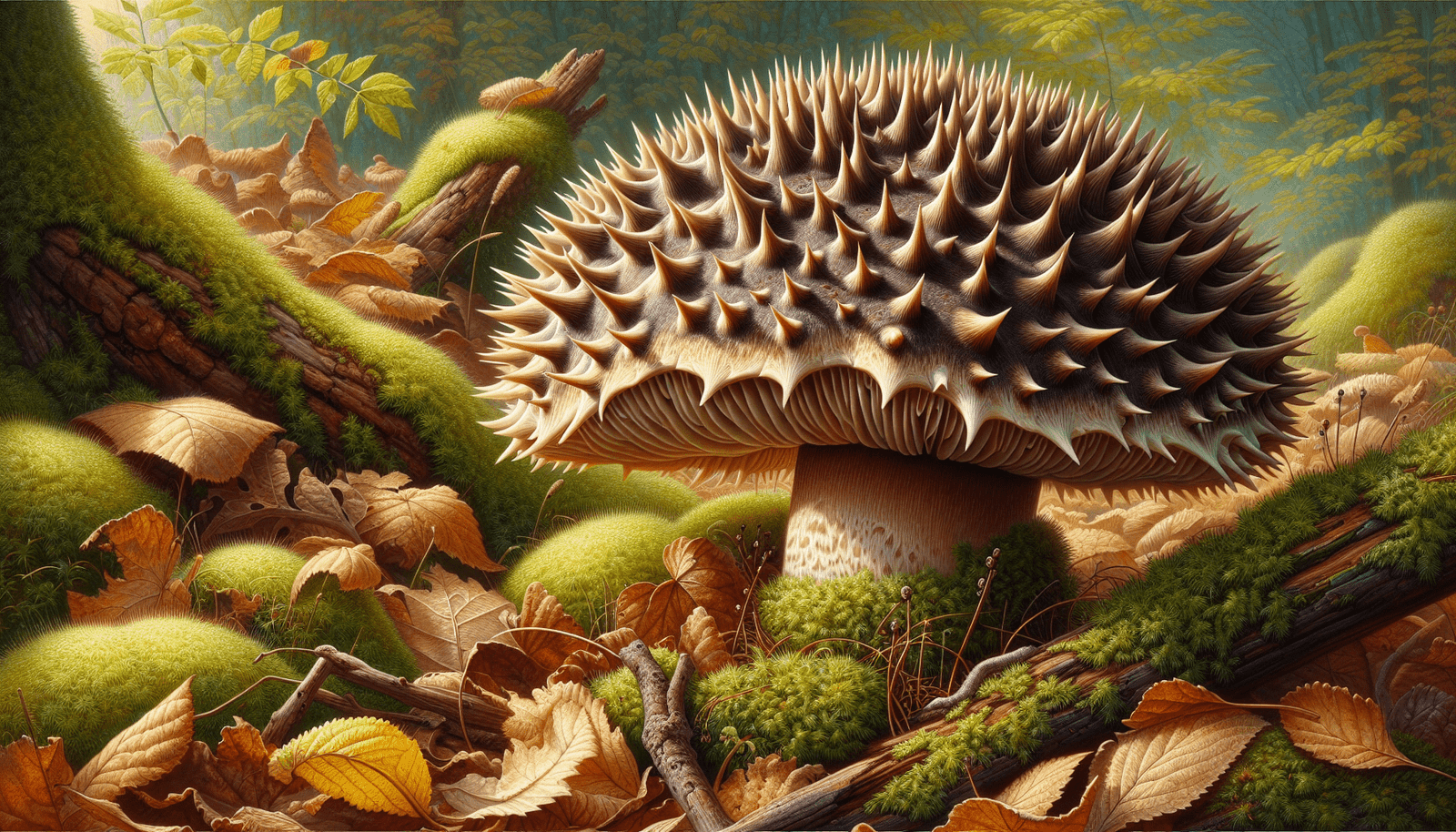Have you ever wondered about the diverse world of fungi and stumbled upon a mushroom that piqued your curiosity? If you’ve encountered Hydnum repandum, you’re in for a treat. This fascinating mushroom doesn’t just captivate with its unique appearance; it also offers intriguing culinary and ecological aspects that make it worth discussing. Let’s delve into the captivating realm of Hydnum repandum and uncover the secrets this fantastic fungus holds.

What is Hydnum Repandum?
Hydnum repandum, commonly known as the Hedgehog mushroom or Wood Hedgehog, belongs to the Hydnaceae family. Unlike many other mushrooms, you’ll distinguish it quickly by its spiky, tooth-like structures beneath the cap rather than gills or pores. Let’s break down some fundamental aspects of Hydnum repandum to give you a clearer picture.
Scientific Classification
The scientific classification of Hydnum repandum helps you understand its place in the fungal world. Here’s a quick breakdown:
| Classification Level | Name |
|---|---|
| Kingdom | Fungi |
| Division | Basidiomycota |
| Class | Agaricomycetes |
| Order | Cantharellales |
| Family | Hydnaceae |
| Genus | Hydnum |
| Species | Hydnum repandum |
Appearance
Hydnum repandum has several distinctive features. The cap is generally 3-15 cm wide, irregularly shaped, and can range from creamy to pale orange. The underside of the cap features the unique, tooth-like spines that make it easy to identify. The stem is robust, matching the cap’s color, and the entire structure exudes a dense, fleshy consistency. These features make the Hedgehog mushroom highly noticeable during foraging expeditions.
Habitat and Distribution
Hydnum repandum typically thrives in mixed woods, often under conifers and deciduous trees. It forms ectomycorrhizal relationships with trees, meaning it plays a crucial role in nutrient exchange between the soil and tree roots. You can commonly find this mushroom in North America, Europe, and parts of Asia, usually emerging during the summer and autumn months.
Identification: How to Recognize Hydnum Repandum
Identifying Hydnum repandum is relatively straightforward due to its unmistakable characteristics. However, knowing the nuances is crucial to avoid confusing it with look-alikes.
Key Identifying Features
To correctly identify Hydnum repandum, look for these key features:
- Cap: Irregularly lobed and often wavy edges, cream to orangish in color.
- Underside: The presence of soft, spiny teeth instead of gills.
- Stem: Short, stout, and shares the same color as the cap.
- Flesh: White, firm, and doesn’t change color when cut.
- Spore Print: White, which can be verified by placing a cap bottom-side down on a dark surface for a few hours.
Potential Look-Alikes
Several mushrooms might look somewhat similar to Hydnum repandum, but key differences set them apart:
| Mushroom | Differentiating Traits |
|---|---|
| Hydnum rufescens | Smaller and more reddish in color compared to Hydnum repandum. |
| Cantharellus species | Have gills or gill-like ridges instead of spines. |
| Sarcodon imbricatus | Darker with scaly cap and bitter taste. |
Understanding these can help you confidently identify Hydnum repandum in the wild.
The Ecological Importance
Fungi play a critical role in the ecological web, and Hydnum repandum is no exception. As an ectomycorrhizal species, it forms mutually beneficial relationships with many tree species.
Symbiotic Relationships
Hydnum repandum forms ectomycorrhizal relationships, which means it exchanges nutrients with its host trees. The fungus supplies the tree with essential minerals and water, while receiving carbohydrates produced by the tree through photosynthesis. This exchange fosters healthier and more resilient forests.
Soil Health
Hydnum repandum also contributes to soil health. The mushroom’s network of mycelium penetrates the soil, breaking down organic materials into simpler forms. This process enriches the soil, aiding in the decomposition of leaves and wood and promoting the growth of other plants and fungi.
Culinary Uses: A Gourmet Delight
Hydnum repandum is not just fascinating biologically; it also holds a prestigious place in the culinary world. This mushroom is highly sought after for its delicate flavor and texture, making it a favorite among chefs and home cooks alike.
Flavor Profile
The flavor of Hydnum repandum is often described as nutty and slightly peppery, with a mildly sweet undertone. The texture is firm, making it a versatile ingredient in various dishes. When cooked, the spines tend to soften, adding an interesting mouthfeel to the dish.
Cooking Tips
Cooking Hydnum repandum is straightforward, but there are some tips to get the best out of its unique qualities:
- Cleaning: Gently brush off any dirt or debris. Avoid washing it with too much water as mushrooms can absorb moisture and become soggy.
- Preparation: Cut off the tough base of the stem. The rest of the mushroom, including the cap, stem, and spines, is edible.
- Cooking Methods: Sautéing, grilling, and roasting are excellent methods. Hydnum repandum pairs well with butter, garlic, and herbs.
Recipe Idea: Sautéed Hydnum Repandum
Here’s a simple and delicious recipe to showcase the mushroom’s natural flavors:
Ingredients:
- 1 pound of Hydnum repandum, cleaned and sliced
- 2 tablespoons of butter or olive oil
- 2 cloves of garlic, minced
- Salt and pepper to taste
- Fresh parsley, chopped (optional)
Instructions:
- Heat the butter or olive oil in a skillet over medium heat.
- Add the minced garlic and sauté until fragrant.
- Add the sliced mushrooms and sauté for about 5-7 minutes or until they turn golden brown.
- Season with salt and pepper to taste.
- Garnish with fresh parsley and serve warm.

Medicinal Properties
Beyond its culinary uses, Hydnum repandum also harbors several medicinal properties, making it an interesting subject for scientific studies.
Antioxidant Properties
Hydnum repandum contains compounds that exhibit strong antioxidant properties. Antioxidants help neutralize free radicals in the body, which are unstable molecules that can damage cells and contribute to aging and diseases.
Anti-Inflammatory Potential
Preliminary studies suggest that Hydnum repandum possesses anti-inflammatory properties. These properties can potentially help reduce inflammation, which is a common factor in many chronic health conditions.
Immune-Boosting Compounds
Like many other mushrooms, Hydnum repandum contains beta-glucans, a type of polysaccharide that can boost the immune system. These compounds help activate various immune cells, enhancing the body’s ability to fight infections and diseases.
Foraging Tips: Finding Hydnum Repandum in the Wild
Foraging for Hydnum repandum can be a rewarding experience. However, it requires a keen eye and a respect for nature to ensure sustainable practices.
Best Seasons and Locations
Hydnum repandum typically appears in late summer to autumn. Look for it in mixed woodlands, especially in areas with oak, beech, pine, and fir trees. They often grow in small groups or solitary and prefer moist, shaded areas.
Foraging Etiquette
When foraging, follow these guidelines to protect the ecosystem and ensure future growth of the mushrooms:
- Take Only What You Need: Harvest only what you can consume and leave some mushrooms behind for spore production.
- Use Proper Tools: Use a knife to cut the mushrooms at the base instead of pulling them out. This practice minimizes damage to the mycelium.
- Avoid Over-Harvesting: Be mindful of the population size and avoid depleting an entire patch.
Safety Precautions
While Hydnum repandum is considered safe and edible, always take precautions:
- Accurate Identification: Ensure correct identification before consuming. If in doubt, consult an experienced forager or mycologist.
- Check Local Regulations: Be aware of local foraging laws and regulations to avoid legal issues.
- Start Small: When trying a new edible mushroom, start with a small amount to ensure you don’t have an adverse reaction.

Conservation Aspects
Like all wild species, Hydnum repandum faces environmental challenges. Conservation efforts are critical to ensure that this fascinating fungus continues to thrive in its natural habitats.
Threats to Hydnum Repandum
The primary threats to Hydnum repandum include habitat loss due to deforestation, climate change, and pollution. These factors can significantly impact their growth and survival.
Conservation Strategies
Several strategies can help protect Hydnum repandum and its habitat:
- Habitat Preservation: Protecting forest areas and promoting sustainable forestry practices can help preserve the natural habitat of Hydnum repandum.
- Research and Monitoring: Conducting research and continuous monitoring can provide valuable data to understand the species’ status and develop effective conservation plans.
- Public Awareness: Educating the public about the ecological and culinary value of Hydnum repandum can foster a sense of stewardship and encourage responsible foraging practices.
The Cultural Significance
Hydnum repandum holds cultural importance in various regions. It has been a part of traditional cuisines and local folklore, enriching the cultural tapestry wherever it is found.
Historical Uses
In many European cultures, Hydnum repandum has been collected and consumed for centuries. Its unique taste and texture made it a favored ingredient in rustic and gourmet dishes alike.
Folklore and Traditions
In regions where Hydnum repandum is indigenous, local folklore often includes tales of the mushroom’s magical properties. These stories highlight the respect and appreciation that communities have for the natural world and its gifts.

Cultivating Hydnum Repandum: Is it Possible?
Cultivating wild mushrooms like Hydnum repandum can be challenging but not impossible. Unlike common cultivated mushrooms, Hydnum repandum’s ectomycorrhizal nature complicates the process.
Challenges
The primary challenge in cultivating Hydnum repandum lies in replicating its natural symbiotic relationships with trees. These mushrooms rely on complex and intimate interactions with their plant hosts, which are difficult to recreate in controlled environments.
Successful Cultivation Efforts
Despite these challenges, there have been some successful cultivation efforts. Ensuring a conducive environment with compatible tree species and maintaining appropriate soil conditions are critical factors.
Future Prospects
Research is ongoing to better understand the cultivation requirements of ectomycorrhizal mushrooms like Hydnum repandum. Advances in mycology and biotechnology could pave the way for more efficient and sustainable cultivation methods in the future.
Conclusion: Embrace the Fascination
Whether you’re a seasoned mycologist, a gourmet chef, or someone with a newfound curiosity about fungi, Hydnum repandum offers a rich tapestry of biological, ecological, culinary, and cultural significance. Its distinctive appearance, intriguing relationships within its habitat, and delightful culinary possibilities make it a truly fascinating organism worth celebrating. By understanding and appreciating Hydnum repandum, you not only expand your knowledge but also contribute to the appreciation and conservation of our natural world.

